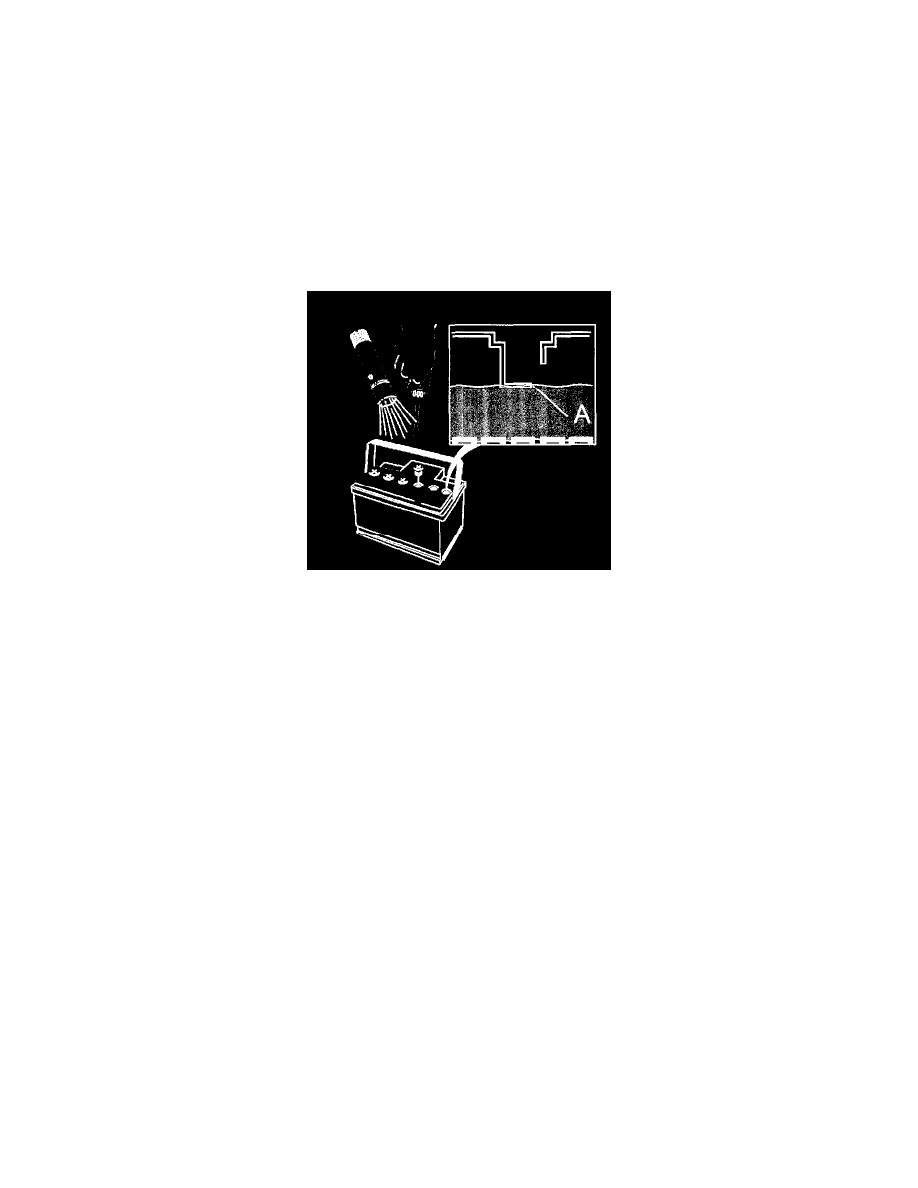S40 L4-1.9L Turbo VIN 29 B4204T3 (2001)

Battery: Procedures
Battery Maintenance
Removing and installing batteries
Removal
- Always disconnect the battery negative lead first. This is to prevent spark build up when removing the battery.
Installation
- Connect the positive terminal first. Apply acid resistant grease (P/N 1161150-6) to the battery posts where the clamps were screwed into place.
Checking the electrolyte level
Check the electrolyte level at every regular service. More regular checks may be required for cars with heavy usage or used in hot climates. Always
check the electrolyte level both before and alter charging the battery.
-
Remove the battery plugs
-
Check the level in all the battery cells. Each cell has its own maximum mark (A). It is recommended that a flashlight is used
-
Top up to the maximum mark (A) using distilled or deionized water. Never use tap water. Tap water may damage the battery!
CAUTION: Never fill above the maximum mark (A). This may cause the electrolyte to leak.
-
Install plugs. Never switch gray plugs (with a gas release filter) with black sealed plugs
-
Tighten the plugs fully.
WARNING:
Remember that the battery contains oxyhydrogen. Oxyhydrogen is highly explosive. A naked flame or smoking near the battery can cause it to
explode resulting in personal injury and/or damage to the car.
The battery contains sulfuric acid. This can cause serious corrosive damage. If the electrolyte comes into contact with your eyes, skin or clothes
-- flush using large quantities of water. Contact a doctor immediately if acid splashes into eyes.
Charging batteries
Charging batteries using a constant charge current
